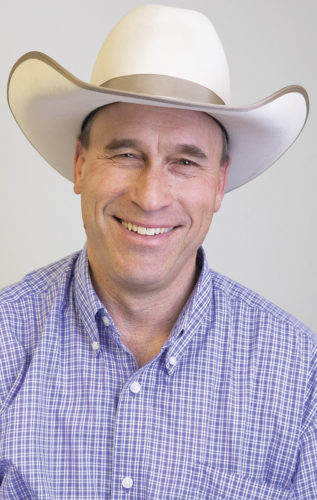I spent several years working in and running feedlots, so I have a keen appreciation, even fondness, for that particular side of the cattle business. It’s been quite a while since I was heavily involved in cattle feeding, but we have finished a couple of loads of our own cattle each year for the past few years. As with most anything bovine-related, it’s often a risky business, but it’s not without its rewards.
I was at a conference not long ago where a presenter with a heap more economic savvy than I have was giving his take on the general outlook and prospects of the industry. He noted that, generally, if a big feedyard can remain at a level of 80 percent full or better, the prospects of making money are pretty good. He asserted that it didn’t matter so much if a glass was half full or half empty if you had a lot of glasses.
You don’t have to be a genius to make sense of that statement when it comes to the state of agriculture. Remember “economies of scale” from your Ag Econ 121 class? It explains why, in my home country where, back in the day, it seemed everyone used to have a little herd of 20 or 30 milk cows, there are now behemoth dairy operations with 5,000 or more cows. It’s the reason why you only see Hickory beating up on the big boys in the state tournament in Indianapolis in the movies. If you have 400 kids in the class, your chances of finding a ball-hawking 7-footer are much better than if there are only 35 kids in the class.
My point here is not to discourage the little guys. Rather, my point is to encourage any guy or gal to broaden their outlook. And I’m not limiting the discussion to merely economic outlook.
It was in the heart of calving season, and I was half-sleeping through a Sunday school discussion a few weeks back when I heard what I thought was a mildly profound statement. From the back of the room, one of the congregants, who tends to make a serious comment once every half-decade or so, piped up with this gem of a rhetorical (or not) question: “Can you really get worse by trying to do better?”
I perked up enough to find the pen in my pocket and scribbled what I could remember of the comment next to the calf tag numbers I’d written on the back of an old McDonald’s receipt. Here was sort of a philosophical, even spiritual if you will, application to the economies of scale rule. I can’t really say I’ve worked too much on putting it into practice, but now that I’m awake, I think I’ll try a little harder.
When you think about it, it stands to reason that if you increase the volume of good deeds and thoughts in your everyday life, the chances of positive, good vibes coming your way and spreading to those around you will also increase. You need to keep after it. Just keep filling glasses. If one glass is always more half empty than it is half full, just keep on moving on to another glass.
Speaking of economics lessons, I’ve discovered every economic law doesn’t really convert to the business of goodwill. The law of diminishing marginal returns is one such law, for example. I remember that one only because my ag econ professor illustrated this supply-and-demand law with donuts.
When you’re hungry, the demand for said pastry is high. The more you eat, however, the demand quickly lessens. And while we’re discussing college days, I’m sure there are plenty among you who tested and proved that theory on non-parent-approved Friday and Saturday night parties that resulted in lessons learned and perhaps parent-approved Sunday morning hangovers.
In the discussion of doing good, however, the inverse of the law of diminishing returns seems to be the rule. The more good you do, the more you will want to do good. So don’t fret. If you keep filling glasses, you’ll stay in business. Keep your goodwill feedyard full, and you’ll always see a return.










